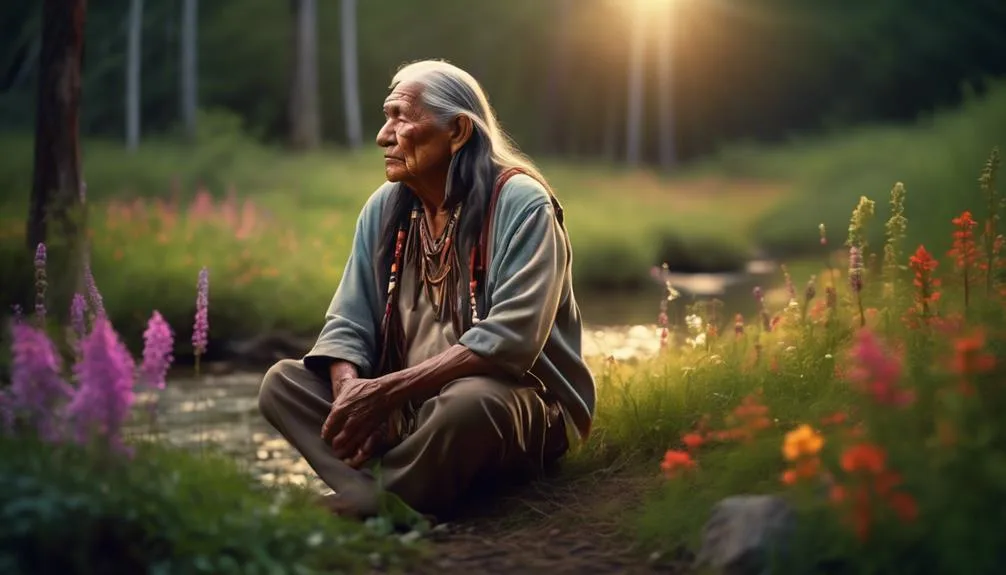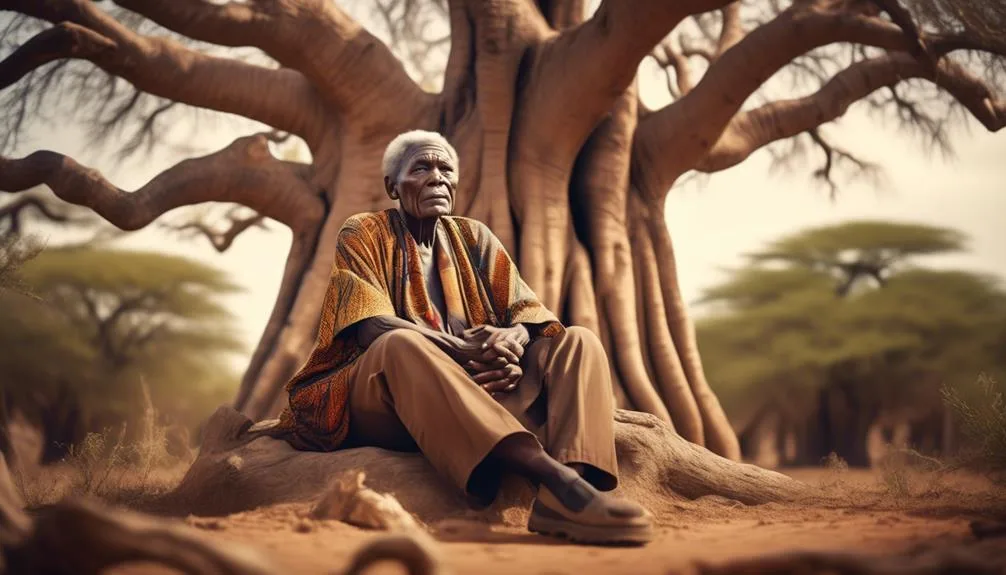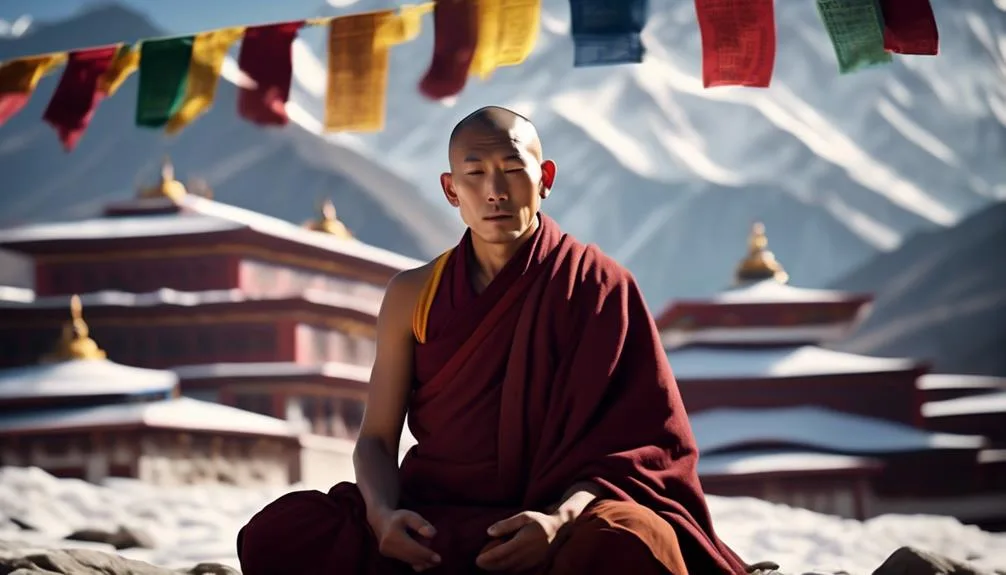Unearthing Wisdom: The Hidden Mindfulness Practices of Indigenous Cultures
You've probably heard the saying, 'Wisdom is like a hidden treasure.'
Well, get ready to embark on a journey that will unearth the hidden mindfulness practices of indigenous cultures from around the world.
These ancient traditions hold a wealth of wisdom that has been passed down through generations, offering unique perspectives on living in the present moment and cultivating inner peace.
From Native American mindfulness traditions to Maori practices of present moment awareness, each culture has its own unique approach to mindfulness.
So, buckle up and get ready to explore the depths of these hidden practices that have the power to transform your perspective on life.
Key Takeaways
- Indigenous mindfulness practices encompass a range of techniques such as meditation, chanting, drumming, dancing, and ceremony, which serve to honor cultural heritage and promote spiritual growth.
- Connection with nature, spirits, and ancestors is a central focus of Native American and Aboriginal mindfulness practices, with activities like nature immersion, dreamtime meditation, and fire ceremonies facilitating this connection.
- Maori, Samoan, and Inuit cultures emphasize present moment awareness through practices like tracing ancestry, reciting prayers, and cultivating gratitude and reverence for the here and now.
- Ancient African wisdom emphasizes communal rituals, ancestor worship, nature connection, drumming and dance, and storytelling as means of fostering mindfulness, interconnectedness, and transmitting wisdom.
Native American Mindfulness Traditions

Native American mindfulness traditions have a rich history and continue to be practiced by indigenous communities today. These traditions encompass a variety of meditation techniques that have been passed down through generations. Native American meditation techniques focus on connecting with nature, spirits, and ancestors, as well as promoting balance and harmony within oneself and the community.
Indigenous mindfulness practices often incorporate chanting, drumming, and dancing to induce a state of mindfulness and deep connection with the present moment. These practices aren't only a means of relaxation and stress relief, but also serve as a way to honor and preserve cultural heritage. They provide a space for introspection, self-reflection, and spiritual growth.
Native American mindfulness traditions offer valuable insights and techniques that can be beneficial for individuals seeking a deeper understanding of themselves and their connection to the world around them.
Aboriginal Rituals for Mindful Living

Building upon the exploration of Native American mindfulness traditions, we now turn our attention to the profound Aboriginal rituals that cultivate mindful living. Indigenous Australian meditation techniques and mindful practices in South American indigenous cultures offer unique insights into the art of being present and attuned to one's surroundings.
- Yoga Nidra: Aboriginal cultures have practiced a form of deep relaxation and meditation known as Yoga Nidra, which involves conscious relaxation and visualization to achieve a state of deep awareness.
- Dreamtime Meditation: Aboriginal communities engage in Dreamtime meditation, where they connect with their ancestors through vivid dreams and visions, fostering a sense of interconnectedness and guidance.
- Nature Immersion: Indigenous Australians and South American tribes emphasize connecting with nature through mindful walks, observation of natural phenomena, and ceremony, fostering a deep sense of respect and harmony with the environment.
- Ritual Drumming: In many Aboriginal cultures, ritual drumming is used to induce a meditative state, promoting mindfulness and spiritual connection.
- Fire Ceremonies: Fire ceremonies are common in Aboriginal and South American indigenous cultures, serving as a powerful tool for grounding, purification, and communal mindfulness practices.
Through these rituals, Indigenous Australians and South American tribes provide us with valuable lessons on the importance of mindfulness, connection with nature, and spiritual practices in cultivating a mindful way of living.
Maori Practices of Present Moment Awareness

Maori culture encompasses a variety of practices that emphasize present moment awareness and foster a deep connection with the natural and spiritual world. These practices, similar to Samoan mindfulness practices and Inuit techniques for mindfulness, are deeply rooted in the Maori people's connection to the land, ancestors, and the spiritual realm.
One key practice is whakapapa, which involves tracing one's ancestry and understanding the interconnectedness of all beings. This practice helps individuals stay rooted in the present moment by acknowledging the past and the future.
Another practice is karakia, which involves reciting prayers or incantations to invoke spiritual guidance and protection. By engaging in these practices, Maori people cultivate a heightened sense of awareness, gratitude, and reverence for the present moment, enabling them to navigate life with mindfulness and connectedness.
Ancient African Wisdom for Mindfulness

Drawing from ancient African wisdom, mindfulness practices have been cultivated and passed down through generations, offering a profound connection to the present moment and a holistic understanding of the world.
Ancient Egyptian mindfulness techniques and African tribal mindfulness practices are rich in their diversity and efficacy. Here are five key aspects of ancient African wisdom for mindfulness:
- Communal Rituals: African tribes often engage in communal rituals that foster a collective mindfulness experience, promoting unity and a deep sense of interconnectedness.
- Ancestor Worship: Honoring ancestors through rituals and ceremonies helps to cultivate mindfulness by acknowledging the wisdom and guidance passed down from previous generations.
- Nature Connection: African mindfulness practices emphasize a deep connection with nature, recognizing its healing power and using it as a source of grounding and inspiration.
- Drumming and Dance: Rhythmic drumming and expressive dance are integral parts of African mindfulness practices, allowing individuals to enter a state of flow and heightened present moment awareness.
- Storytelling and Oral Tradition: Ancient African cultures used storytelling and oral tradition to transmit wisdom and teachings, fostering mindfulness by encouraging active listening and deep reflection.
Tibetan Techniques for Cultivating Inner Peace

Tibetan techniques for cultivating inner peace offer a profound and transformative journey into the depths of one's mind. Rooted in ancient Buddhist meditation techniques, these practices are designed to calm the mind, enhance self-awareness, and cultivate a sense of inner tranquility. One of the key elements of Tibetan mindfulness is the emphasis on conscious breathing. By focusing on the breath, practitioners are able to anchor their attention to the present moment, allowing them to let go of distractions and cultivate a sense of inner stillness. Additionally, Tibetan meditation techniques often incorporate visualization and mantra recitation to deepen the meditative experience. Through consistent practice of these techniques, individuals can develop a greater sense of emotional balance, mental clarity, and overall well-being.
Markdown Table:
| Tibetan Breathing Exercises | Buddhist Meditation Techniques |
|---|---|
| Emphasize conscious breathing to anchor attention | Incorporate visualization and mantra recitation |
| Calm the mind and enhance self-awareness | Cultivate a sense of inner tranquility |
| Cultivate emotional balance and mental clarity | Deepen the meditative experience |
| Contribute to overall well-being | Promote a transformative journey |
Frequently Asked Questions
How Do Native American Mindfulness Traditions Differ From Other Mindfulness Practices?
Native American mindfulness practices differ from other mindfulness techniques because they are rooted in Indigenous cultures and traditions. These practices emphasize a deep connection with nature, the community, and the spiritual realm, fostering a holistic approach to mindfulness.
What Are Some Specific Aboriginal Rituals That Promote Mindful Living?
Aboriginal mindfulness practices incorporate unique rituals that promote mindful living. These Indigenous techniques for mindfulness can include ceremonies, storytelling, and connection with nature. By engaging in these practices, you can cultivate a deeper sense of presence and connection to the world around you.
How Do Maori Practices of Present Moment Awareness Contribute to Overall Well-Being?
Maori practices of present moment awareness, rooted in ancient cultural traditions, contribute to overall well-being. By fostering mindfulness and connection to the present, these practices promote mental health and a sense of balance in daily life.
Can You Provide Examples of Ancient African Wisdom That Can Be Applied to Mindfulness?
Ancient African wisdom offers valuable insights for mindfulness practices. Native American mindfulness, along with other indigenous cultures, emphasizes connection to nature, community, and ancestral wisdom. These practices can enhance overall well-being and promote a deeper sense of self-awareness.
What Are Some Specific Tibetan Techniques for Cultivating Inner Peace?
To cultivate inner peace, Tibetan meditation methods employ various mindfulness techniques. These practices involve focused attention, visualization, and mantra recitation. By engaging in these techniques, one can develop a sense of calm and tranquility within oneself.
Conclusion
In conclusion, the mindfulness practices of indigenous cultures offer valuable insights and techniques for cultivating inner peace and present moment awareness.
While some may argue that these traditions are outdated or irrelevant in today's fast-paced world, it's important to remember that mindfulness is a universal practice that can benefit anyone, regardless of their cultural background.
By embracing the wisdom of indigenous cultures, we can enrich our own lives and contribute to a more harmonious and mindful society.






